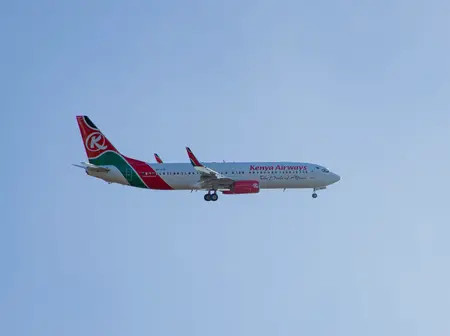After years of turbulence, Kenya Airways (KQ) is regaining altitude — and credibility. Its first full-year profit in over a decade, marks more than a financial milestone. It signals a disciplined, strategy-driven shift in how the national carrier operates. Below are ten key indicators that KQ is not just recovering — it’s repositioning itself for long-term relevance in African and global aviation.
Kenya airways is moving toward a mono-fleet model built entirely on Boeing aircraft. This decision reduces training and maintenance complexity, simplifies logistics, and cuts costs — all critical for a leaner, more efficient airline.
KQ is sticking with the Boeing 787 Dreamliner for long-haul routes. With 234 seats, the 787 is better suited to KQ’s passenger demand and cost profile on routes to Europe, Asia, and North America. It also has a fleet of 737s suited to intra-African routes and may soon replace its entire Embraer fleet with these.
KQ has recently faced flight disruptions due to a global shortage of aircraft engine components. Three of its nine Dreamliners were grounded, forcing the airline to operate at 80% capacity. One has since returned to service, and the remaining two are expected back before year-end.
Despite posting a Ksh 5.4 billion profit in 2024, KQ cannot legally pay dividends. With Ksh 297 billion in liabilities and negative equity of Ksh 118 billion, corporate laws prohibit payouts until the balance sheet stabilizes.
Profitability doesn’t eliminate the need for external funding. KQ still requires working capital and fresh investment for fleet renewal, cabin upgrades, and route expansion. Project Kifaru One reduced inefficiencies but did not erase debt.
Passengers often ask about Wi-Fi and modern in-flight entertainment (IFE). While older aircraft (especially Embraer 190s and some 737s) weren’t factory-fitted with these features, KQ plans to make Wi-Fi and IFE standard on future aircraft — contingent on available funding.
KQ has pulled back from low-demand or unprofitable routes, but it is also expanding strategically in strong markets. New or enhanced routes include:
KQ is building a non-equity partnership with Qatar Airways — a move that enhances network coverage without compromising ownership. It includes:
South African Airways (SAA) recently withdrew from the Pan-African Airline Group initiative. Instead of shelving the idea, KQ is now recruiting new partners across Africa to advance this regional integration agenda — in line with the Single African Air Transport Market (SAATM).
Kenya Airways is not just recovering; it is redefining itself. Through smart alliances, disciplined financial management, and scalable growth, KQ is positioning itself as a regional anchor in African aviation. The road ahead demands further investment and partnership, but for the first time in years, the carrier is flying with clear purpose and steady hands.

Leave a Reply